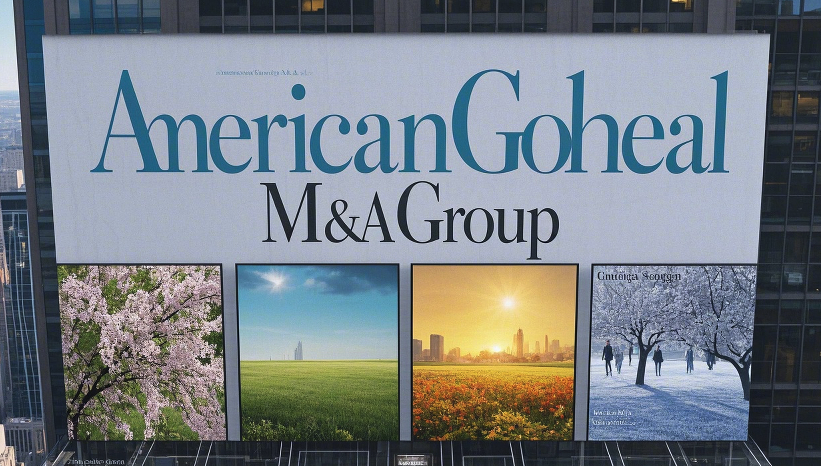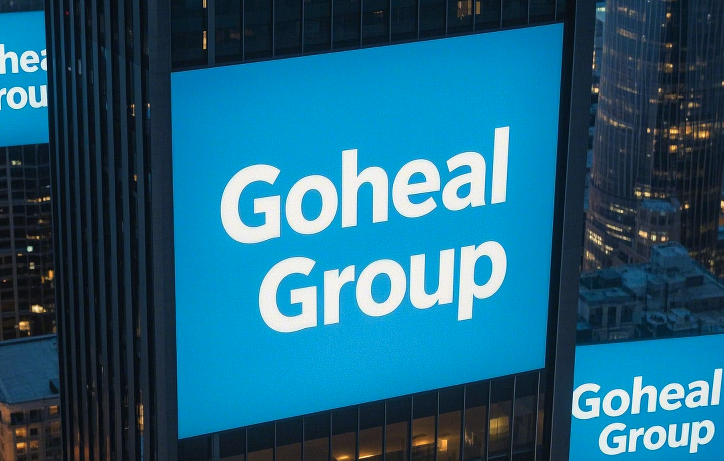"Benefits are the beginning and end of heaven and earth." In the arena of the stock market, there is a widely circulated "iron law" - once good news comes out, the stock price peaks. This phenomenon is common, especially when listed companies announce major mergers and acquisitions. Stock prices rise, news is flying all over the sky, and investors flock in, but soon, the market is like being poured with a basin of cold water - opening high and closing low, the heat drops sharply, and the stock price even returns to the pre-liberation period.
Why is this so? Mergers and acquisitions are a powerful tool for companies to boost market value and leapfrog development, but they have frequently turned into a game of "crying wolf" in the capital market. Today, let us open the script behind this abnormal phenomenon and see the truth of this good news together, as well as the hidden lines that Goheal has revealed in practice that have been ignored by the market.

American Goheal M&A Group
1. A good news, a mess? The first half of the "merger drama" is too lively
Let's start with a widely watched "high-profile merger".
A listed company announced that it would acquire a new energy enterprise for 8 billion yuan. The transaction structure was complex, the story was rich, and the market dream rate was so high that it was shocking. The media used "100 billion market value engine" and "green leader rebirth" to fight together, and the investment group seemed to hear the bell of wealth freedom. What was the result? The stock price hit the daily limit on the day of the announcement, fell back after two days, halved after a week, and flat after three months.
This is not an isolated case, but a microcosm of the entire A-share merger and reorganization ecology. "The peak is reached when the good news is realized" has become the "black magic" of the capital market. Behind it is not mystery, but routine.
After studying more than 600 large-scale mergers and acquisitions cases around the world, Goheal summed up a core conclusion: the merger and acquisition news itself is often the "expectation" anchor point that capital is most interested in, rather than the value realization of the essence of the transaction.
Expectations are all the fuel for this game. Once the expectations are released, the truly complex integration, operation, and synergy in reality have not yet begun, and the market's enthusiasm has begun to cool down rapidly. In other words: capital likes to listen to stories, but is unwilling to wait for the ending.
2. Is mergers and acquisitions "roses"? Don't forget that it also has "thorns"
"Eating up" a company sounds ambitious, but it is actually full of risks.
First, there is the pitfall of integration. Cultural conflicts, system incompatibility, and friction in management methods, these invisible and intangible "soft risks" are often ignored. Goheal pointed out that globally, more than 65% of mergers and acquisitions failed not because of wrong transaction prices, but because of the loss of control in the subsequent integration stage. The situation in China is no less.
Secondly, there is the wall of supervision. With the continuous strengthening of the information disclosure system and the more market-oriented regulatory thinking, many seemingly perfect transactions are also facing gray risks such as "price increase before approval", "overvalued valuation", and "insider trading".
Then there is the illusion of profit. Many mergers and acquisitions rely on "storytelling" to raise valuations, but in fact the acquisition targets are poorly managed, have poor qualifications, and have tight cash flow, or even just "fake restructuring" to solve the problem of capital occupation by related parties.
What investors think in their minds is "You acquire a new track, the company's market value will at least double", but in reality, the company does "I will first list the subsidiary to cash out, and by the way, transfer some debt pressure".
A plan full of "synergy effects" is no match for a confused consolidated report.
3. Do you think this is "good news"? It may just be a bait for capital
We have to face a cruel reality: many mergers and acquisitions are not for creating value, but for creating market value.
In the eyes of some company executives, mergers and acquisitions are the most convenient market value management tool - they can tell new cross-border stories and quickly "merge" revenue and profits in the report. "Market value is the moat" has become a new slogan, and "good news" has become a new traffic entrance.
Behind it are often serial designs such as major shareholders reducing their holdings, fixed increase arbitrage, and structured market making. Those acquisition targets that were once labeled as "industrial upgrading", "dual carbon pioneers", and "digital economy" soon became financial black holes, goodwill minefields, and management nightmares.
Goheal once evaluated a popular cross-border M&A. Within just 4 months after the restructuring was approved, the actual controller of the company completed 6 share reductions, with a total cash out of 1.2 billion yuan. During the same period, the company's net profit fell by 28% year-on-year, the acquisition target has not yet been integrated, and goodwill accounts for nearly one-third of total assets.
When good news becomes a hype tool, bad news will quietly appear at the moment of realization.
4. The market does not disbelieve in M&A, but no longer believes in "mouth-cannon M&A"
In the final analysis, the market is not disgusted with M&A, but is increasingly wary of "mouth-cannon M&A".
Think about those truly successful M&A cases - Tencent's acquisition of Supercell, Hengrui's acquisition of MediLink, and CATL's investment in Ganfeng Lithium - which one is not clear in strategic logic, solid in synergy foundation, and stable in subsequent operations? These cases may not have a surge in stock prices when the news is disclosed, but they have completed value realization several years later and become the "still waters run deep" of the capital market.
Goheal found in serving cross-border M&A that successful companies all understand one thing: M&A is not a climax, but a starting point. Pre-merger research, actuarial valuation, clear transaction structure, and real transparency of integration paths are the underlying logic that can truly make the benefits of mergers and acquisitions "cash in".
The market does not disbelieve in mergers and acquisitions, but is no longer willing to pay for "castles in the air".
5. How should investors "disassemble" the benefits of mergers and acquisitions?
When facing a restructuring announcement, don't just look at the headlines, titles and keywords, but also focus on the following questions:
Does the acquirer have the ability to integrate? Is there any successful experience? Has it historically relied on "buying, buying and buying" to support the financial statements?
Is the financial data of the acquired company true and reliable? Are there any hidden debts or major pending lawsuits?
Is the valuation too high? Is the transaction structure reasonable? Are the other party's shareholders locked in? Is there a performance bet?
The most important thing: Can this merger and acquisition produce clear and foreseeable synergies for the main business?
Goheal also recommends that small and medium-sized investors should train themselves to ask more questions about "what next" for the "first glance benefits" of mergers and acquisitions and restructuring. The second stage after the heat is often the watershed for the real advance and retreat of institutional funds.
The memory of the capital market is shorter than you think, but the pit is always there
Looking back at the M&A cases of A-shares and Hong Kong stocks in recent years, whether it is a star enterprise or an unpopular target, almost without exception, they have experienced the cycle of "good news-limit-fall-adjustment".
It's not that the market is not smart enough, but human nature always loves to pursue dreams. There are always people willing to be the relay for those short-term surges and plunges-and the story is repeated, but it is increasingly difficult for the script to get a "box office miracle".
In this era of information overload, what is really worth studying for investors and entrepreneurs is whether the merger and acquisition really creates value, whether it paves a new growth path for the company, and whether it can withstand the precipitation of time.
After all, the market value can expand overnight, but only the fundamentals can determine whether it can be red for ten years.
Six, what do you think?
Have you ever stepped on the pit of mergers and acquisitions? Or have you seen any amazing examples of "good news realized but not reaching the top"?
In what way do you think mergers and acquisitions should be carried out to truly achieve "good news is the starting point" rather than "high opening and low going"?

Goheal Group
Welcome to share your views in the comment area, and let's discuss together: What other ways can be used to tell truly valuable stories in future capital operations?
For more in-depth insights on M&A strategies, valuation risks and transaction structure design, please follow Goheal. We will continue to provide professional content and practical advice for investors and entrepreneurs.
[About Goheal] Goheal is a leading investment holding company focusing on global M&A holdings. It is deeply engaged in the three core business areas of listed company control acquisition, listed company M&A and restructuring, and listed company capital operation. With its deep professional strength and rich experience, it provides enterprises with full life cycle services from M&A to restructuring to capital operation, aiming to maximize corporate value and achieve long-term benefit growth.